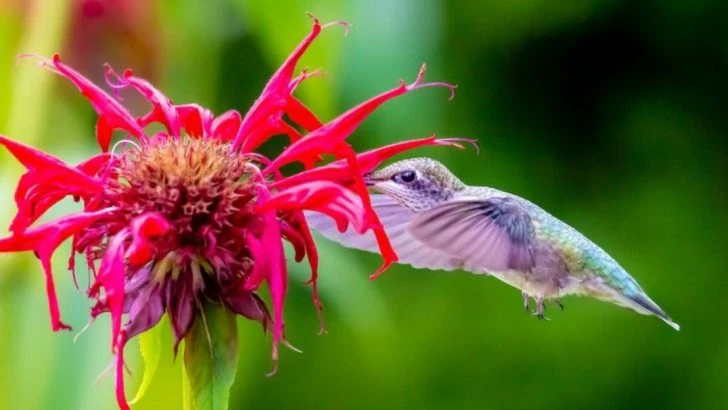Pollinators aren’t just looking for flowers—they’re looking for your garden. Early summer is a critical window. Spring blooms are fading, and the buffet starts to close. Bees are buzzing with hunger. Butterflies are fluttering on fumes. And hummingbirds? They’ve got places to be—but only if you’ve got the goods. Enter the flowering shrubs that don’t flinch in the heat. They bloom big, bold, and right on time. Spirea explodes with color. Abelia hums with activity. And elderberry? It’s practically a five-star pollinator hotel. These 17 shrubs aren’t just pretty—they’re powerhouses. They feed the winged workers when pickings are slim. And they make your garden feel alive, electric, essential. Plant them, and you’re not just growing beauty. You’re keeping the whole system buzzing. And honestly? That’s about as heroic as gardening gets..
Butterfly Bush
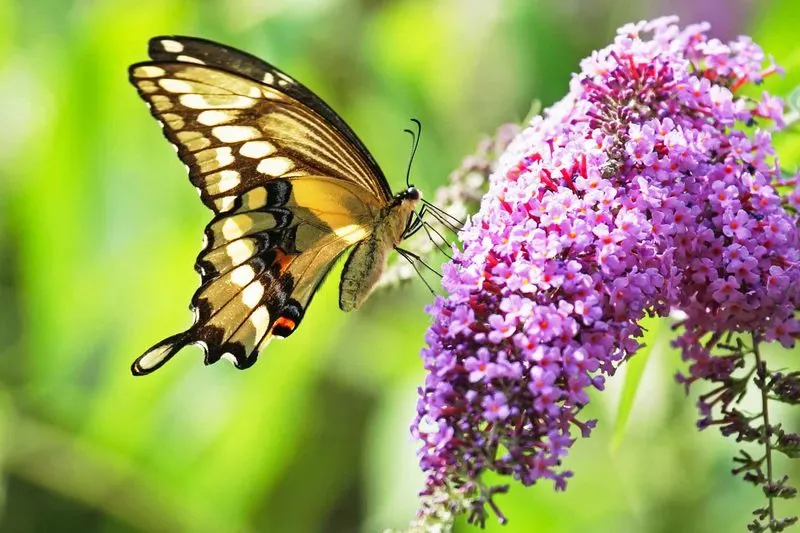
Nicknamed the “summer lilac,” the butterfly bush is a striking addition to any garden. Its long spikes of purple flowers attract a myriad of butterflies. Native to China, this shrub thrives in sunny locations.
With its sweet fragrance, it becomes a magnet for pollinators, providing essential nectar throughout early summer months. Its hardy nature and drought resistance make it a favorite for low-maintenance gardens.
Did you know? Despite its beauty, some regions consider it invasive due to its rapid growth. Consider controlled planting for ecological balance.
Bee Balm
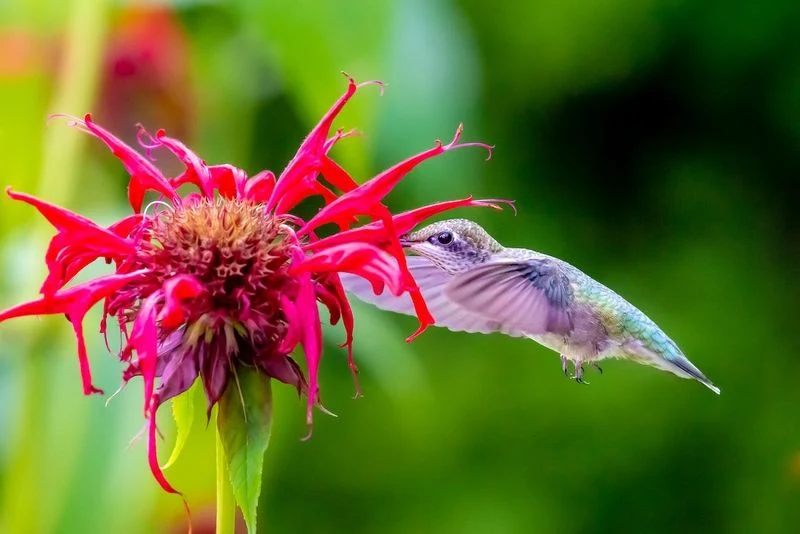
Bee balm, also known as Monarda, paints the garden in fiery reds and pinks. This North American native is cherished for its aromatic leaves and tubular flowers. When bee balms blossom, bees and hummingbirds are not far behind.
The plant’s spicy scent doubles as a natural mosquito repellent, adding to its charm. Its rapid spread through rhizomes ensures a dense, colorful display.
Fun fact: The leaves have been used in traditional herbal teas, offering a refreshing minty flavor. Perfect for pollinator gardens in need of vibrant color.
Elderberry
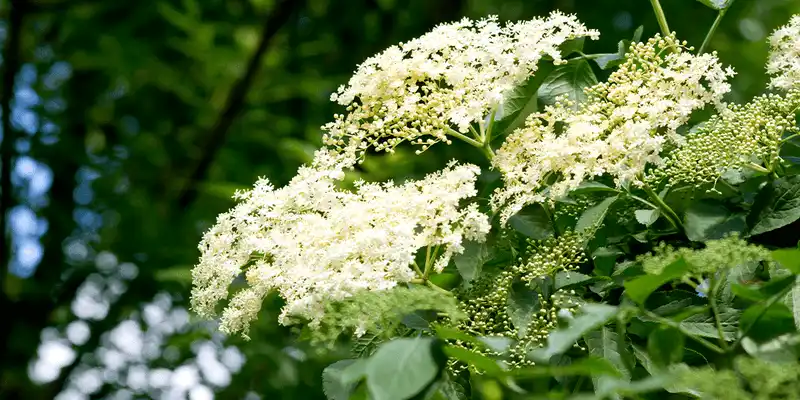
Elderberry bushes, with their delicate white blossoms, are a haven for a variety of pollinators. Originating from Europe and North America, these shrubs are both ornamental and functional.
Their flowers give way to dark, nutritious berries, beloved by birds and mammals alike. Elderberry flowers are also known for their medicinal properties, making this plant a versatile garden addition.
These shrubs prefer moist soil and can be found thriving alongside streams and in woodland edges, attracting not only pollinators but also wildlife enthusiasts.
Spirea
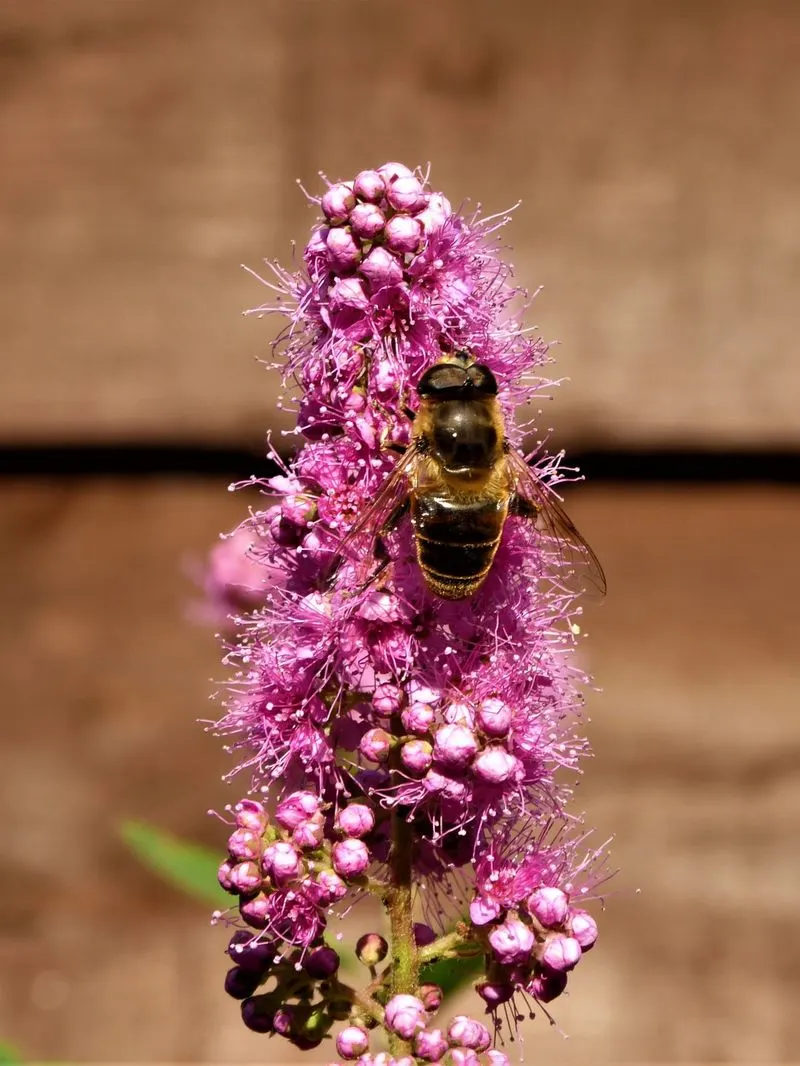
Spirea, with its dense clusters of pink or white flowers, is a classic garden favorite. Originating from temperate regions of the Northern Hemisphere, it’s renowned for its simplicity and charm.
This shrub is a boon for pollinators, offering them ample nectar during the early summer. Its compact form makes it ideal for borders or as a standalone feature.
Spirea’s ability to thrive in various soil types and resist pests makes it a resilient choice for any garden setting. Its long-lasting blooms ensure a vibrant display throughout the season.
Hydrangea
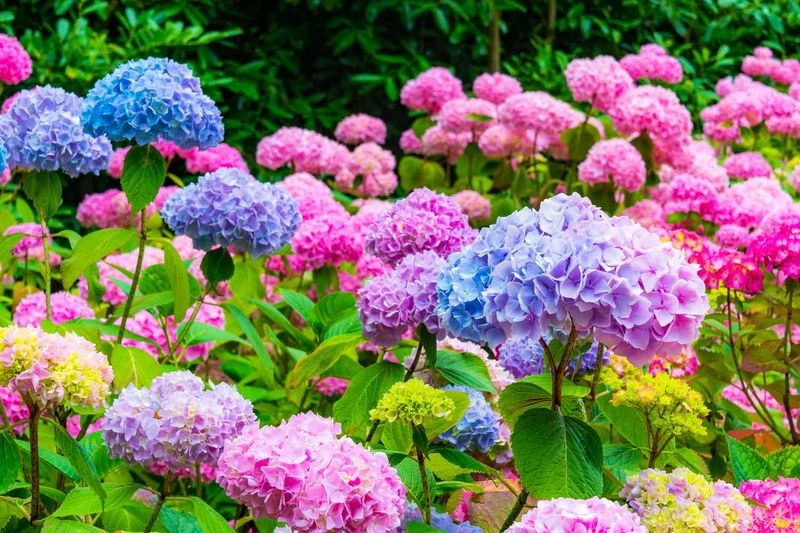
Hydrangeas are celebrated for their grand flower heads in shades of pink, blue, and white. These shrubs bring a touch of elegance to gardens while supporting pollinators in search of nectar.
Their color-changing ability, influenced by soil pH, adds an interactive element to gardening. While hydrangeas draw pollinators, they also offer a cooling canopy, perfect for a summer picnic spot.
Despite their delicate appearance, they are robust and adaptable, thriving in both sun and partial shade. A must-have for garden enthusiasts looking to attract pollinators with style.
Ninebark
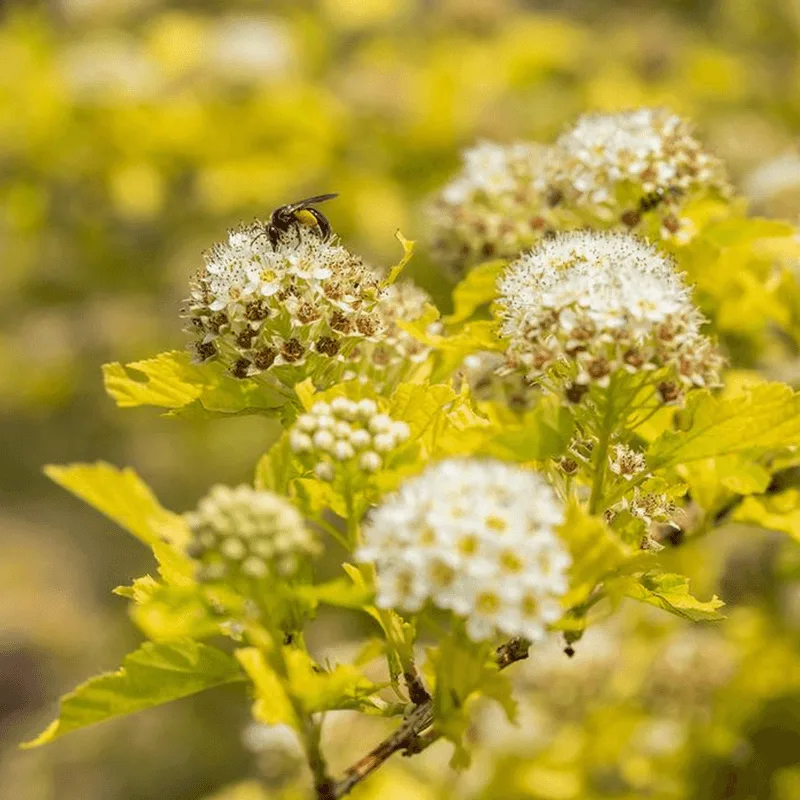
Ninebark, named for its unique peeling bark, provides year-round interest. Its white blooms attract bees and other pollinators in early summer, ensuring a lively garden.
As a native North American shrub, it’s an excellent choice for supporting local ecosystems. Its hardiness and ability to thrive in poor soil conditions make it a gardener’s ally.
The shrub’s foliage transitions to stunning shades of red and orange come autumn, providing seasonal beauty. Planting ninebark not only boosts pollinator activity but enhances garden texture.
Rose of Sharon
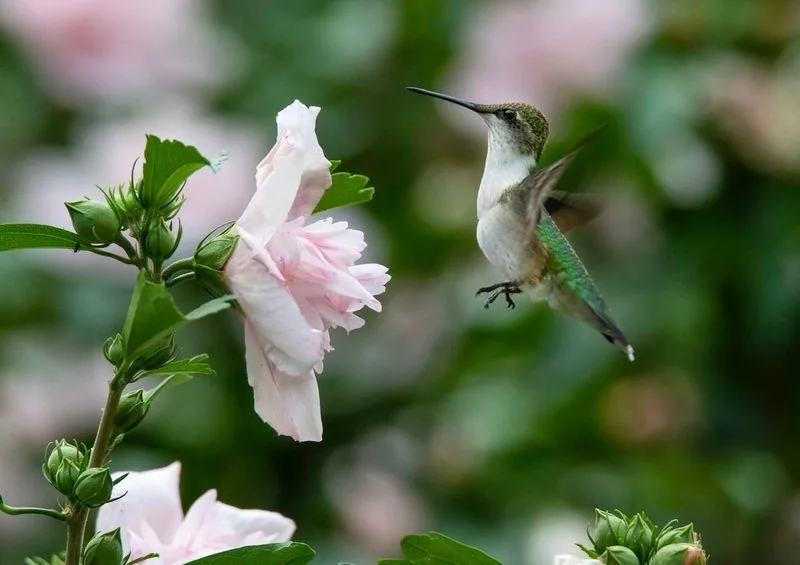
Rose of Sharon, a hardy hibiscus relative, dazzles with its large, showy flowers. Blooming later in summer, it bridges the gap, providing nectar when other sources dwindle.
Its blooms attract hummingbirds and bees, offering a dynamic spectacle. This shrub is versatile, flourishing in diverse climates. Each blossom bursts with color, bringing a tropical feel to temperate gardens.
Despite their exotic look, they require minimal care, adapting easily to urban environments. Rose of Sharon is a nursery staple, perfect for gardeners seeking vibrant, pollinator-friendly options.
Lilac
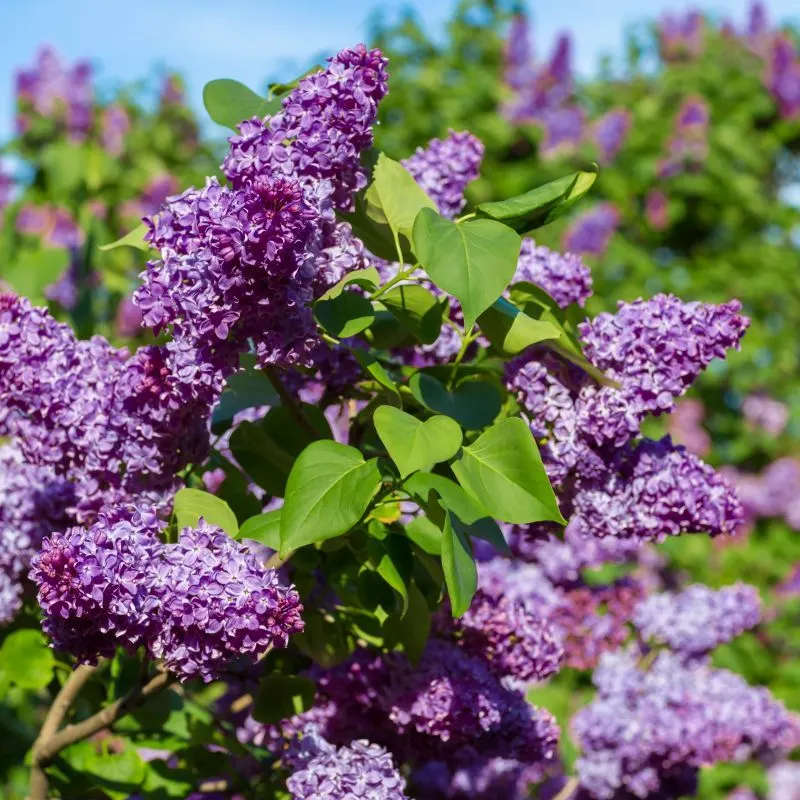
Lilacs, with their intoxicating fragrance, are synonymous with spring’s transition to summer. These shrubs bear clusters of small, fragrant flowers that are a magnet for pollinators.
Originating from Eastern Europe, lilacs thrive in well-drained soil with full sun exposure. Their historical significance as symbols of love and renewal makes them a favorite in classic gardens.
Beyond their beauty, lilacs are robust and long-lived, often found in heritage gardens. They not only enliven spaces with scent but also foster a bustling pollinator community.
Weigela

Weigela is adored for its trumpet-shaped flowers and vibrant foliage. Native to Asia, this shrub brings flair to gardens with its pink and red blooms.
Its flowers are particularly attractive to bees and hummingbirds, ensuring lively garden activity. Weigela’s adaptability to various conditions makes it a resilient choice for gardeners.
The shrub’s striking foliage offers visual interest even when not in bloom, transitioning to rich hues in fall. Ideal for borders, weigeia adds depth and color, while supporting essential pollinator populations.
Snowball Viburnum

Snowball viburnum, with its large, spherical white flowers, is a showstopper in any landscape. These shrubs, resembling hydrangeas, attract a variety of pollinators with their blooms.
Native to Europe and Asia, they thrive in well-drained soils and full sun, providing a dramatic display. Beyond their beauty, they offer wildlife habitat, supporting garden biodiversity.
This viburnum is perfect for creating a focal point or as part of a mixed border. Its blossoms turn to red berries, adding another layer of interest and sustenance for wildlife.
Summersweet Clethra

Summersweet clethra, also known as sweet pepperbush, enchants with fragrant white flower spikes. This native North American shrub thrives in moist conditions, attracting bees and butterflies.
Its late summer blooms ensure pollinators have nectar when other sources are scarce. The shrub’s adaptability to shade makes it a unique choice for woodland gardens.
Summersweet’s glossy green leaves turn vibrant yellow in fall, extending its visual appeal. Planting it near patios or paths allows gardeners to enjoy its sweet fragrance, enhancing outdoor experiences.
Buttonbush
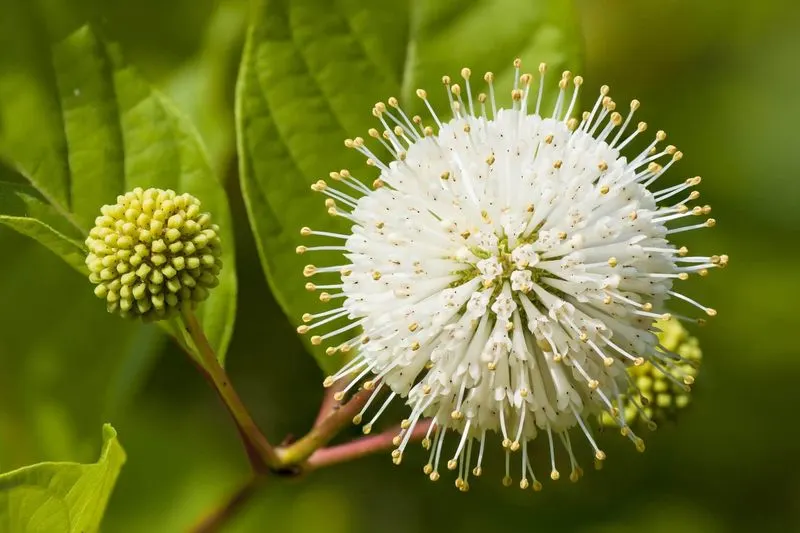
Buttonbush captivates with its unique, spherical flowers that resemble pincushions. These blooms are irresistible to bees, butterflies, and dragonflies. Ideal for wet areas, this shrub can transform boggy spots into vibrant habitats.
Native to North America, it supports local wildlife, making it an eco-friendly choice. Buttonbush shines in both sunny and partially shaded areas, offering versatility.
Its blooms eventually yield nut-like fruits, providing further nourishment for wildlife. By planting buttonbush, gardeners can create thriving ecosystems in challenging spaces, all while attracting a myriad of pollinators.
Honeysuckle
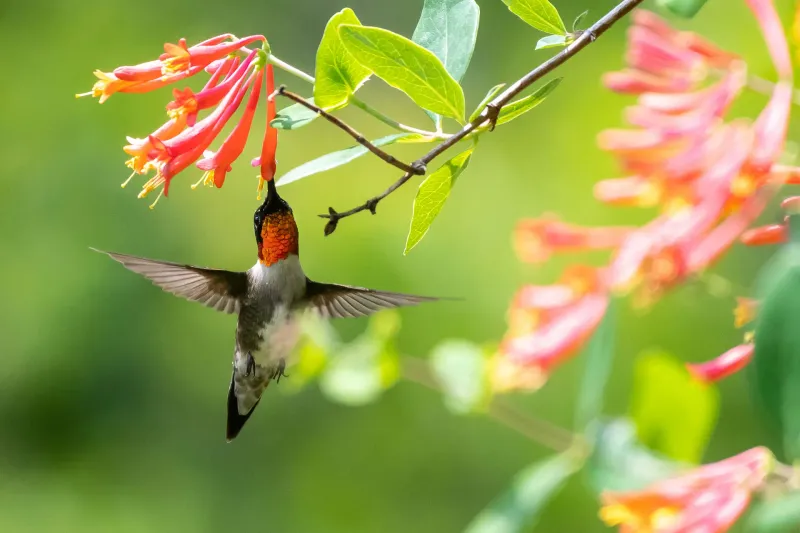
Honeysuckle, with its sweetly scented tubular flowers, is a delight for the senses. These blooms are highly attractive to hummingbirds and butterflies, providing continuous summer nectar.
Known for its vigorous growth, honeysuckle can cover fences or trellises, adding vertical interest. Its dual appeal lies in both its beauty and functionality, as it supports numerous pollinators.
The shrub’s rich nectar and appealing fragrance make it a garden favorite, ideal for informal settings. Honeysuckle ensures lively sights and scents, enriching garden experiences for all.
Korean Spice Viburnum
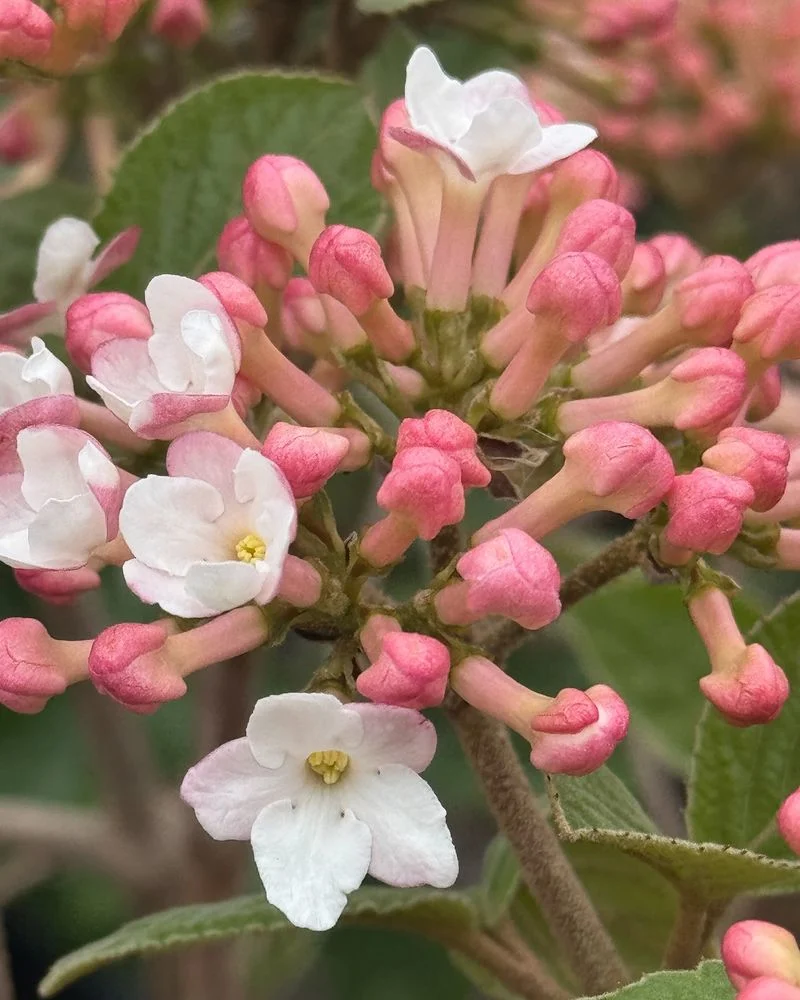
Korean spice viburnum enchants with its spicy fragrance and charming pinkish-white blooms. Originating from Asia, it’s perfect for adding subtle elegance to gardens.
These flowers attract bees, filling the air with sweet scents reminiscent of spice markets. As a hardy shrub, it adapts to various conditions, providing seasonal interest with its changing foliage.
In fall, the leaves turn a vivid red, complementing its autumn berries. This viburnum offers not just beauty but also a sensory experience, making it a beloved choice for pollinator-friendly gardens.
Deutzia
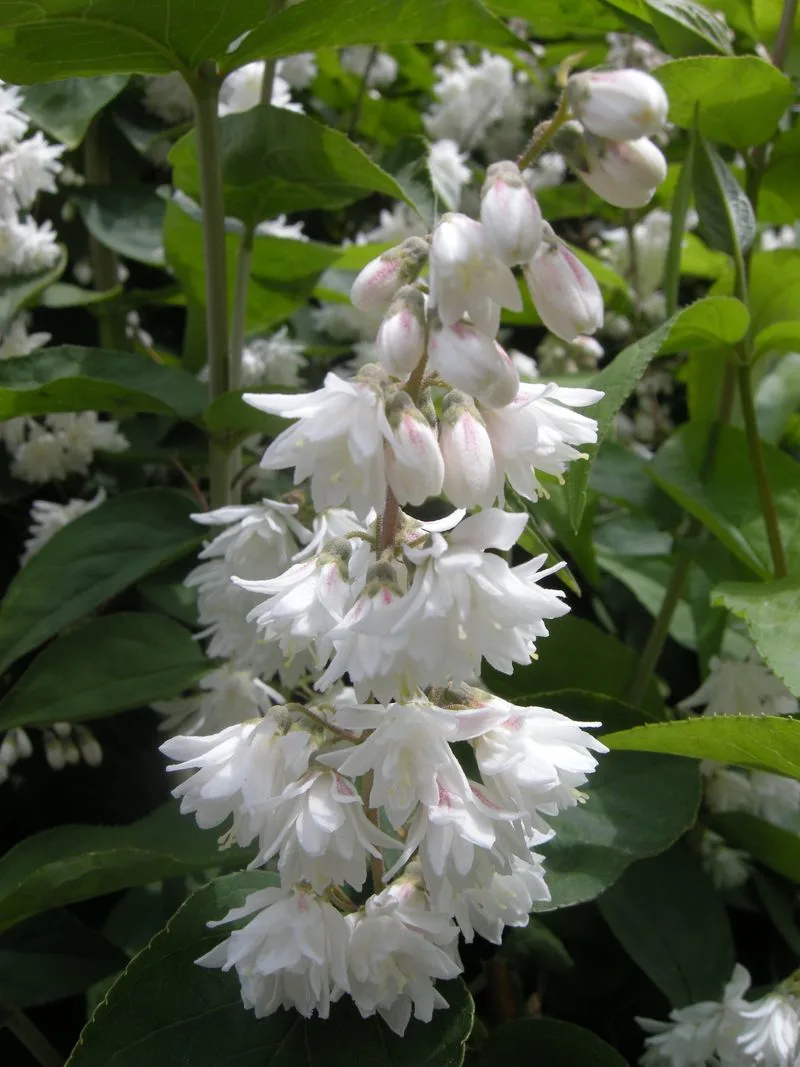
Deutzia is celebrated for its graceful arching branches and profusion of white or pink flowers. Hailing from Asia and Central America, this shrub is a pollinator’s paradise.
The abundant blooms provide a reliable nectar source during early summer. Deutzia’s adaptability to various soil types and conditions enhances its appeal for gardeners.
Its delicate flowers create a soft, romantic landscape, perfect for park settings or home gardens. By planting deutzia, one supports pollinators while enjoying a lush, ornamental display.
Abelia
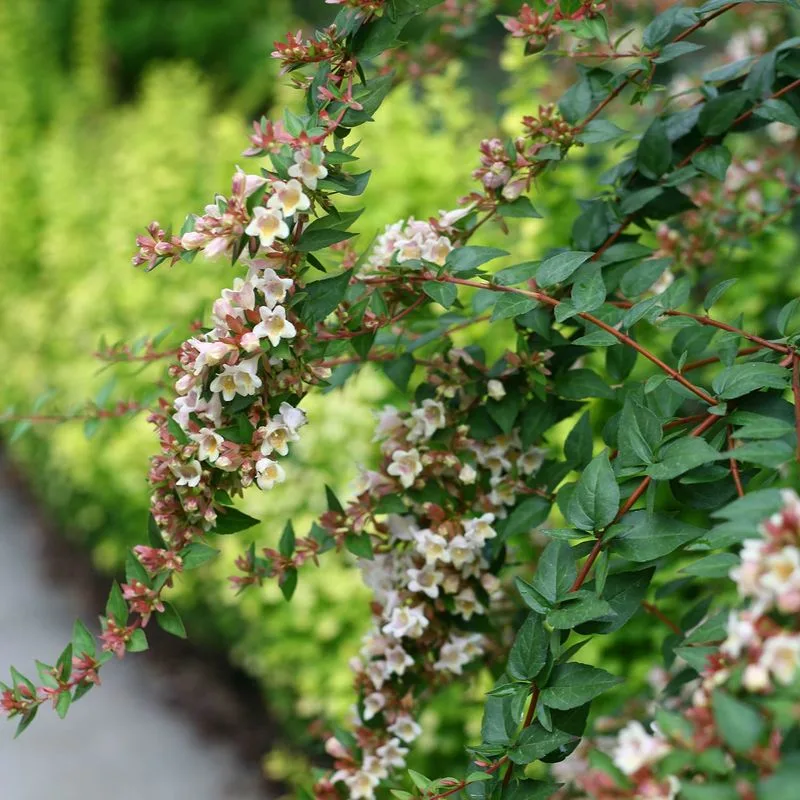
Abelia captivates with its delicate, bell-shaped flowers and glossy leaves. Native to East Asia, it offers a continuous display of blooms from late spring into fall.
This shrub’s flowers are a beacon for bees and other pollinators, ensuring garden activity. Abelia’s versatile nature allows it to thrive in sun or partial shade, making it a gardener’s ally.
The foliage remains semi-evergreen, adding texture and color year-round. Ideal for borders or hedge planting, abelia enriches landscapes while supporting essential pollinator populations.
California Lilac (Ceanothus)
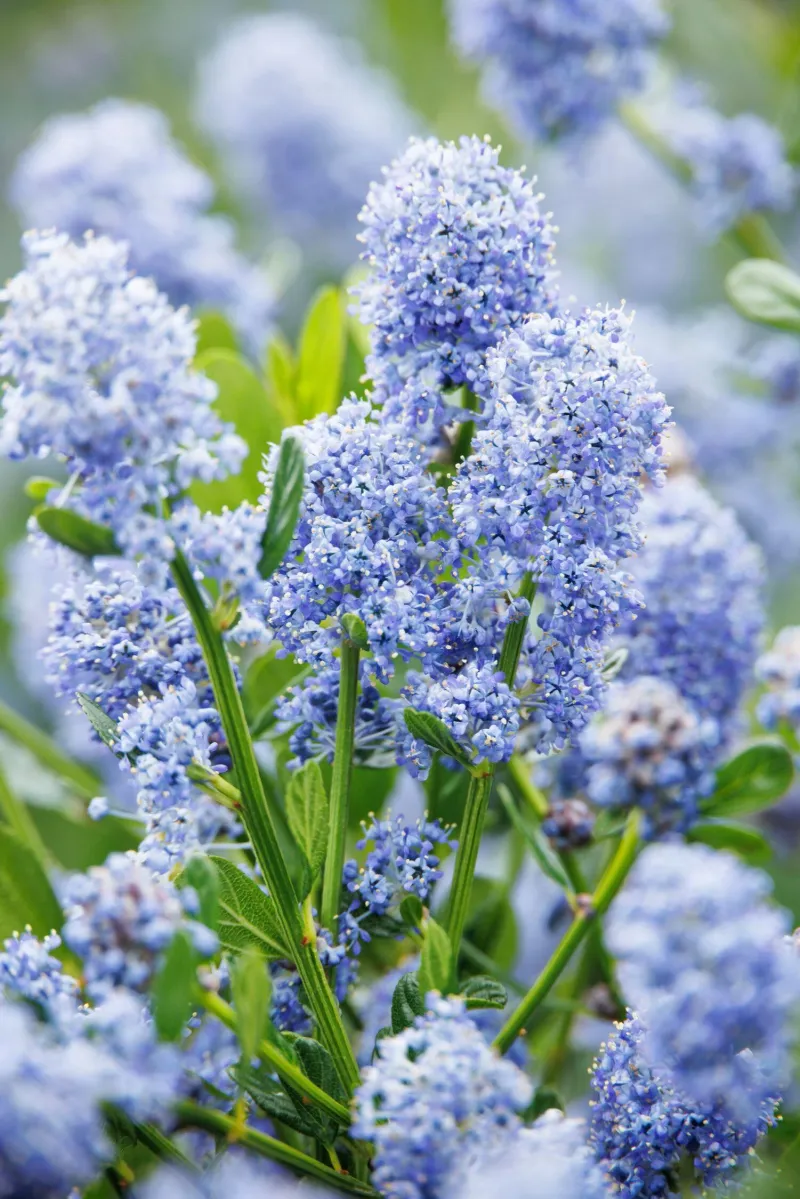
In the realm of flowering shrubs, California Lilac stands out with its vibrant blue blossoms. Thriving in sunny, well-drained locations, this plant is a magnet for pollinators. Bees and butterflies can’t resist its rich nectar, making it a pivotal source of sustenance.
Adaptable and hardy, the California Lilac is perfect for a garden looking for an eye-catching focal point. Its evergreen leaves provide year-round interest and support local wildlife.
Did you know? Despite its name, the California Lilac is not related to true lilacs but offers an equally enchanting presence in any landscape.

